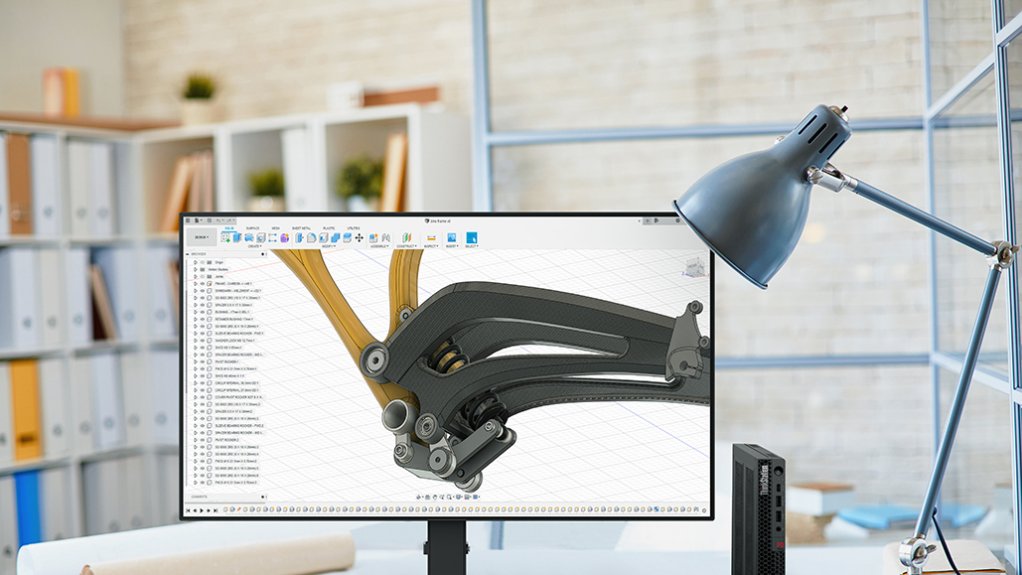Lenovo recently unveiled its latest solutions which it says are designed to run sophisticated workloads while maintaining the reliability, usability and configurability needed across a variety of industries.
The ThinkStation and ThinkPad workstations allow end-users to configure tailor-made workstations and include Independent Software Vendor, or ISV, certifications, components such as 13th Generation Intel Core processors and professional NVIDIA RTX graphics processing units, or GPUs, and operating systems including Windows 11 and several distributions of Linux.
The ThinkStation P3 series desktop workstations feature a Tower form factor built for mission-critical tasks, said to be especially useful for designers, engineers and students who require flexibility and expandability without compromising on compute power. The ThinkStation P3 Tower with its expanded chassis supports larger power supplies up to 1 100 W, designed to handle more demanding configurations and multiple storage options up to 26 TB for data-heavy applications. The ThinkStation P3 Ultra is a compact workstation designed to handle demanding workflows and changing hybrid workspaces and features a space-saving chassis that is less than four litres in volume. The ThinkStation P3 Tiny is said to be class leading in its size, and at one litre in volume is designed to fit into almost any location.
Lenovo says that its latest ThinkPad P Series models are designed for hybrid work and foster positive employee experiences, while providing high levels of power and performance, allowing users to do more on the move.
The ThinkPad P14s i Gen 4 and P16s i Gen 2 are aimed at highly mobile professionals, educators and students who seek a mix of performance and power at a comfortable price point without compromising security or durability.
The ThinkPad P16v i is designed to close the gap between entry-level and high-end workstations, for creators who require more power to handle large workloads and multitasking. It includes Intel Core H-Series processors, advanced graphics and security features to protect data and identity on the move.
The ThinkPad P16 Gen 2 and ThinkPad P1 Gen 6 are said to offer high levels of mobile workstation performance allowing for complex workflows such as high-definition rendering and high-end virtual reality on the go. The P16 Gen 2 is focused on raw performance approaching that of some desktop workstations, with the highest-class mobile Central Processing Units, or CPUs, professional NVIDIA RTX GPUs, and what Lenovo describes as its highest ever memory capacity in a mobile workstation with as much as 192 GB.
This latest generation of desktop workstations are said to be Lenovo’s most powerful entry-level workstation offerings and offer form factor size options that can scale across a variety of industries, hybrid workspaces and their respective workflows. Users in engineering and architecture, finance, advanced education, and in medical applications, can customise and configure the new ThinkStation P3 according to specific requirements.
Lenovo states that the latest ThinkPad mobile workstations and the rest of its ThinkPad portfolio are also increasing the use of recycled materials and post-consumer content (PCC) plastic in select components, in line with the company’s focus on supporting a circular economy and its goal to incorporate PCC recycled content into 100% of personal computer products by 2025.
EMAIL THIS ARTICLE SAVE THIS ARTICLE
To subscribe email subscriptions@creamermedia.co.za or click here
To advertise email advertising@creamermedia.co.za or click here













